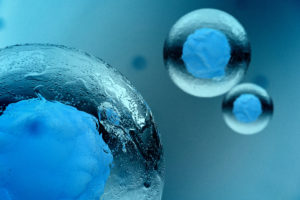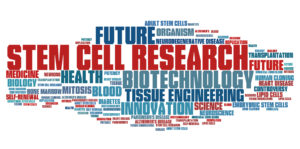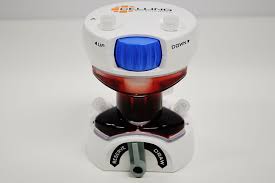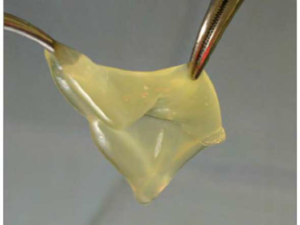Reduce, Restore and Regenerate are the 3 R's of Stem Cell Therapy
Reduce Biochemical Imbalances; Restore Cell to Cell Communication and Regenerate New Tissue by: Edward G. Loniewski, DO, FACOS, FAOAO
A very common question asked by many patients and even well informed and educated doctors is how cell based therapies such as bone marrow derived stem cells may work. After years of researching and understanding this technology, we can reduce this answer to three simple steps. Although we could give you more than a hundred mechanisms, we chose three since most people can remember 3 steps. If we have more than three, everyone in our multitasking and attention deficit infused society begins to forget numbers one and two. Many philosophers such as Camus, Kierkegaard or even Aristotle suggest we narrow down our explanations of complex thought and systems down to three reasons, examples or theories. Following in this tradition, we can help simplify this very complex field of healthcare down to three major mechanisms of action for cell based therapies. These are;
- Reduce
- Restore
- Regenerate
- Reduce- Cell based therapies help restore the natural biochemical balance. We normally have a complex set of biochemical byproducts of cellular maintenance in our joints. When this is in normal balance, it is called homeostasis. However, as we age, or when trauma or disease occurs in a joint, this balance is interrupted and mass destruction and pain occur. One of the most important biochemical markers is Interleukin 1-Beta ( IL-1 B) . Although this Interleukin is normally used to clean up cellular debris, arthritic joints produce too much, causing the destruction of the repair. Each time our body tries to repair itself, this abnormally high amount of Interleukin 1- Beta disrupts this process. At Advanced Orthopedic Specialists, we can produce a bone marrow derived product from your own cells to naturally reduce the abnormally high levels of the IL-B. We can filter and concentrate of a natural blocker found in everyone's own bone marrow called Interleukin 1- Beta Receptor Antagonist ( IL-1B Ra) . Your own body produces this within your bone marrow and in smaller amounts in your blood. We have found a way to concentrate this through a patented filtering process producing over 4 times the concentration found in any other preparation. Without this important step, it is very difficult for your joint to restore its natural biochemical balance or homeostasis.
- Restore - Your joint is an organ just like your brain, kidney, liver or heart. An organ is made up of cells which perform a specific function necessary for life. These cells carry on their purpose by communicating efficiently between each other. This is called cell-to-cell communication or a paracrine signaling. When an organ such as your knee has arthritis, the cells begin to act abnormal and the communication between these cells breaks down. The result is a dysfunctional joint. This is what happens in a dysfunctional family. Nobody communicates effectively with each other and the family unit begins to break down. However, Mesenchymal Stem Cells (MSC's) can restore normal paracrine signaling of cells through the release of specific factors designed to restore function of the joint. Thus, when stem cells restore this normal communication, the normal functions of the joint return. A patented processing technology coupled with a significantly improved cell harvest technique can improve cell harvesting by over 345% and return of more than 90% of your cells back to your body. This provides the absolute highest number of mesenchymal stem cells to your joint to ensure that your normal cell to cell communication is restored.
- Regenerate- Only after a joint has completed the first two steps of this process, can we move forward with the building of new tissue or regeneration. After we have reduced the levels of harmful biochemical byproducts in your joints to a reasonable or near normal level, and after restoring cell to cell communication, your joint may now begin the process of producing new tissue. Think about this scenario like a family with an alcoholic father. There is nothing like alcoholism as a source of family dysfunction. In fact. there are just about the same number of children with alcoholic parents as there are people with arthritis (about 28 million) in the United States. If this family is to survive, the first step is to reduce the chemical causing the destruction. In the family, this is alcohol. In the joint, this is Interleukin-1- Beta. The second step is to encourage the family to communicate and re-establish the lines of normal communication. In the family suffering from alcoholism, this is called therapy and in the joint this is called a paracrine event. Once the chemical in the family is reduced and the communication is restored, regeneration will be able to occur and the family will be able to function as a normal family and the children will be able to thrive. In the joint, we have reduced the harmful biochemical imbalance and restored cell to cell communication and new tissue can now regenerate. However, the actual amount of tissue needed for pain relief may be very minimal. There is no relationship between the amount or volume of new tissue formation and the level of pain relief or the restoration of joint function. Some people can produce very large amounts of new tissue and have very little change in their pain or function. However, many patients may have very little, if any, tissue regeneration and have significant pain relief and restoration of function. Why would this be true? Think about the last time you had joint pain and you took a simple over the counter medication to relieve this pain. Most people would have a reduction of their pain. However, this pain reliever did not grow any new tissue by any means. These medications are not injected into your joint, and your stomach does not directly connect to your joint. However, whenever you take a pill, your joint has a good chance that it will feel better and allow you to function at a higher level. Why is this true? The answer is the fact that these medications help to temporarily reduce some other minor players in the biochemical imbalance of your joint. Thus, new tissue is not necessary to reduce the pain and restores some of the function to your joint. Mesenchymal stem cells do this, but through a much more complex system and for a substantially longer period with a positive side effect of possibly growing more tissue.
The use of cell therapy can help your body naturally reduce a harmful chemical imbalance; restore cell to cell communication; and regenerate new tissue all adding up to a joint with lower pain and higher function without side effects or the inconvenience and risk of major surgery.







